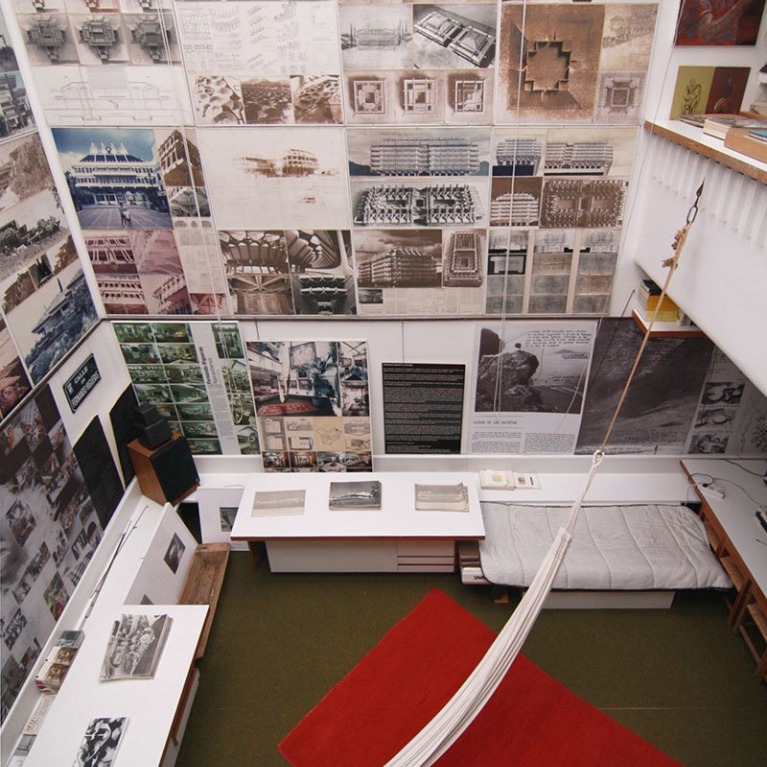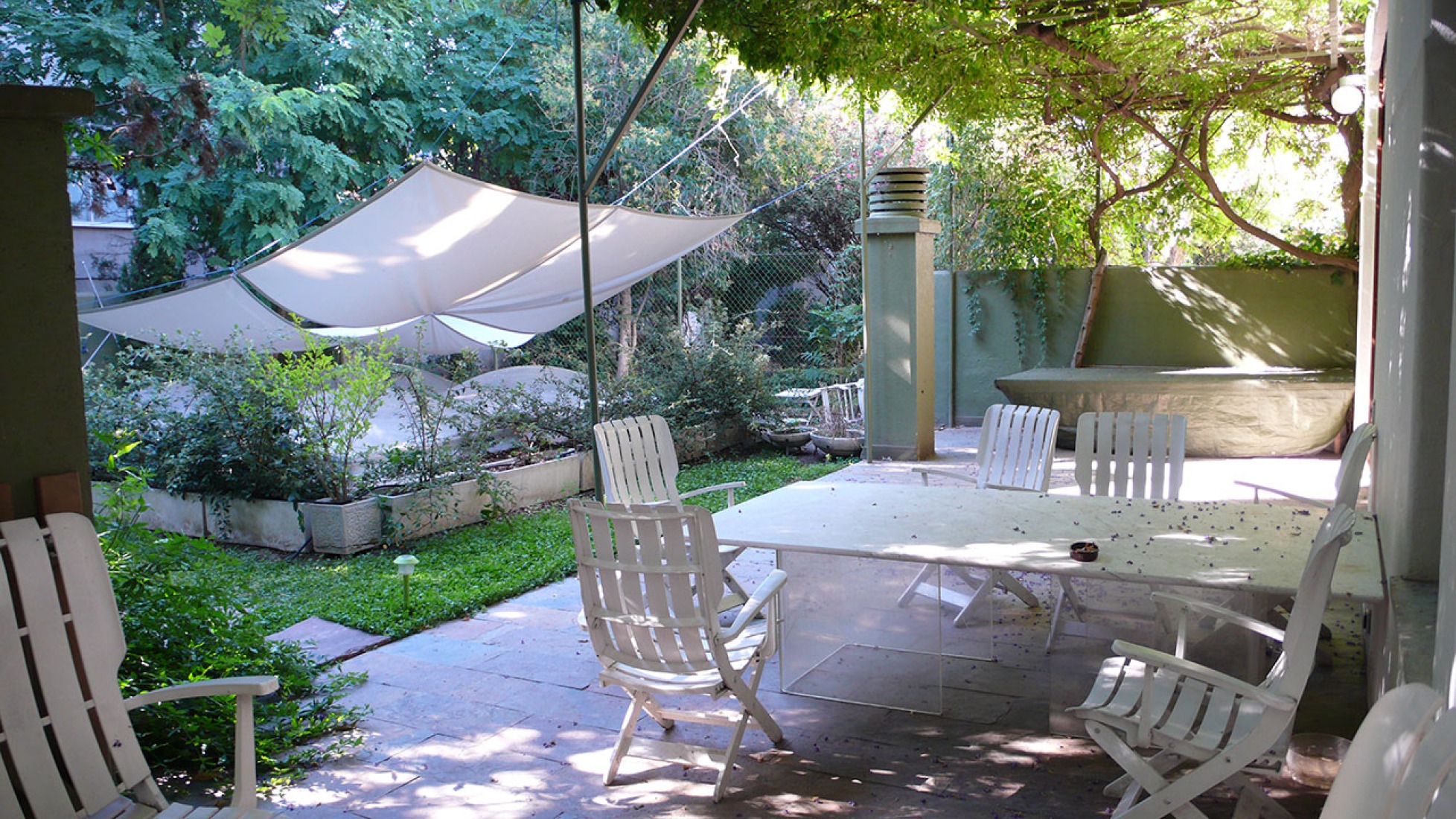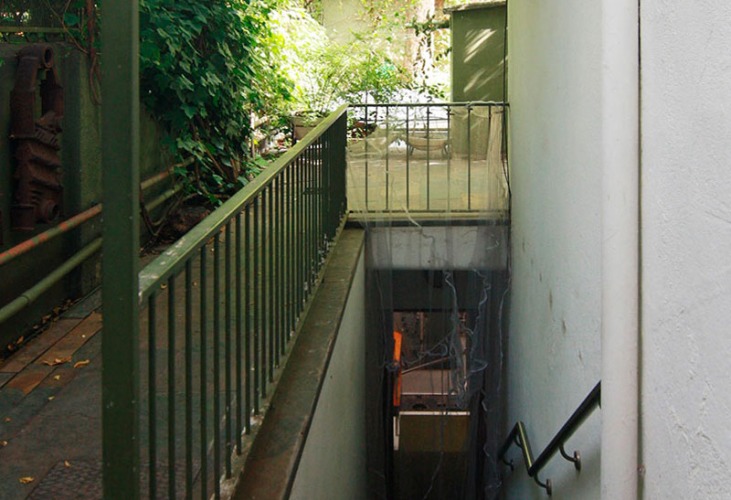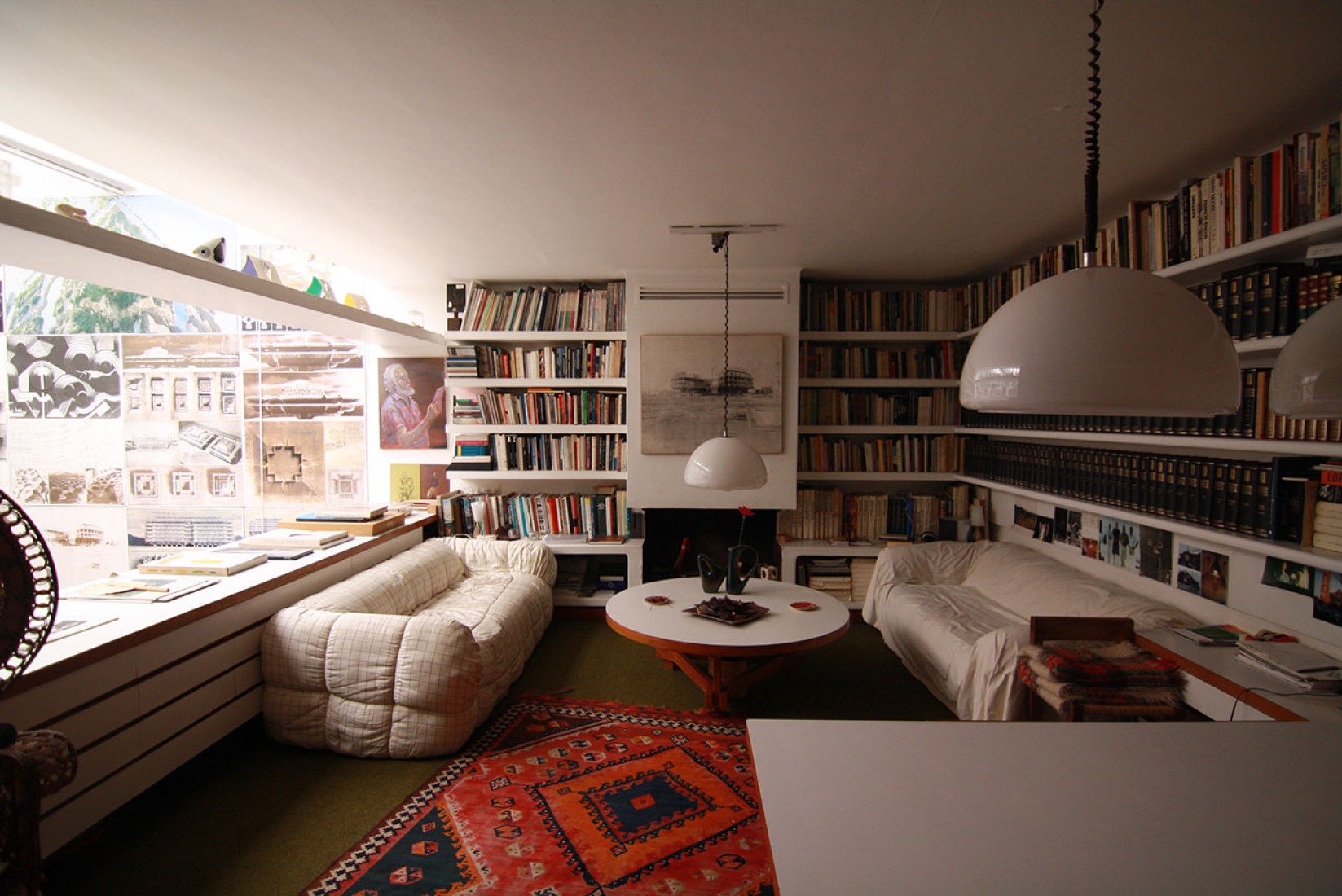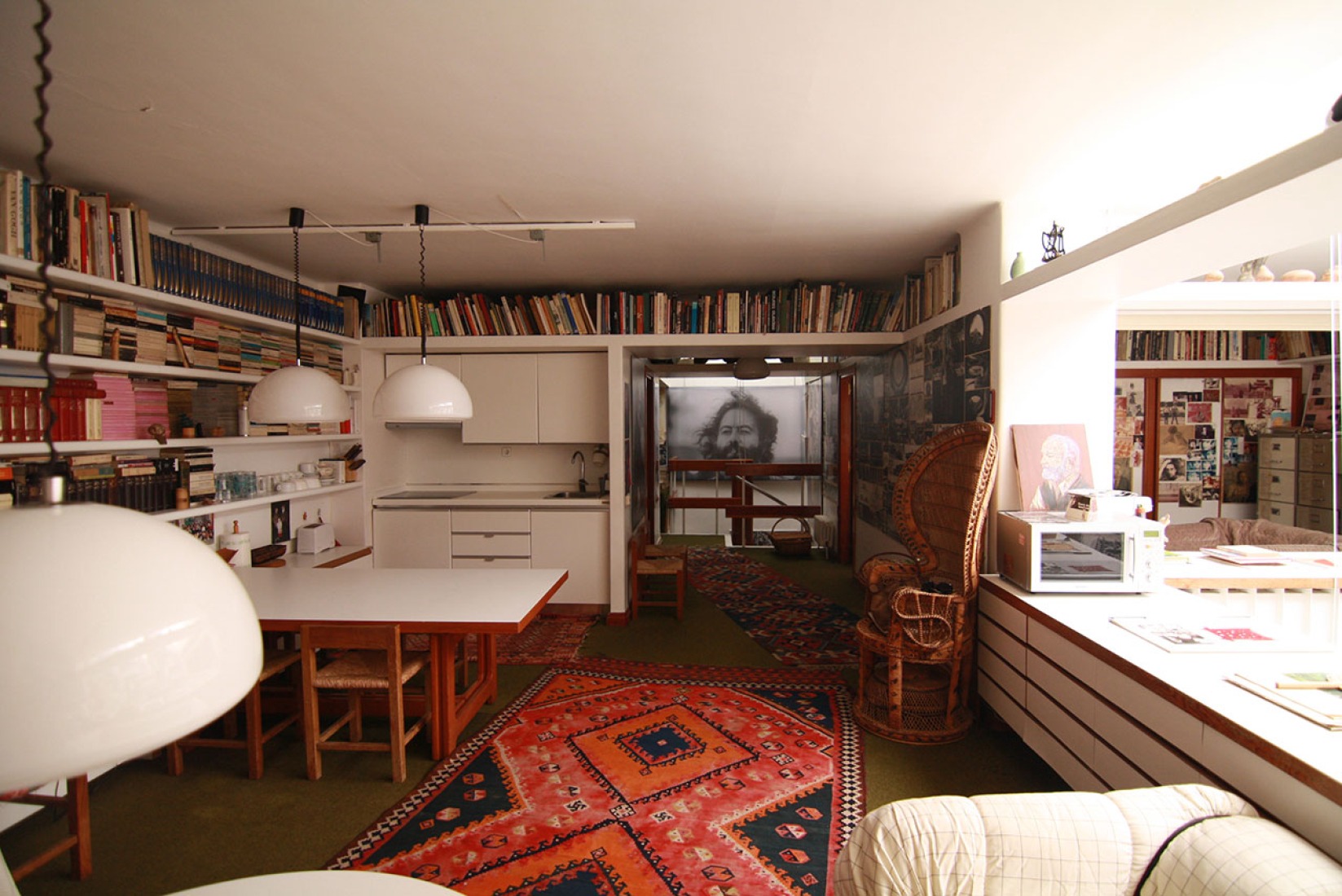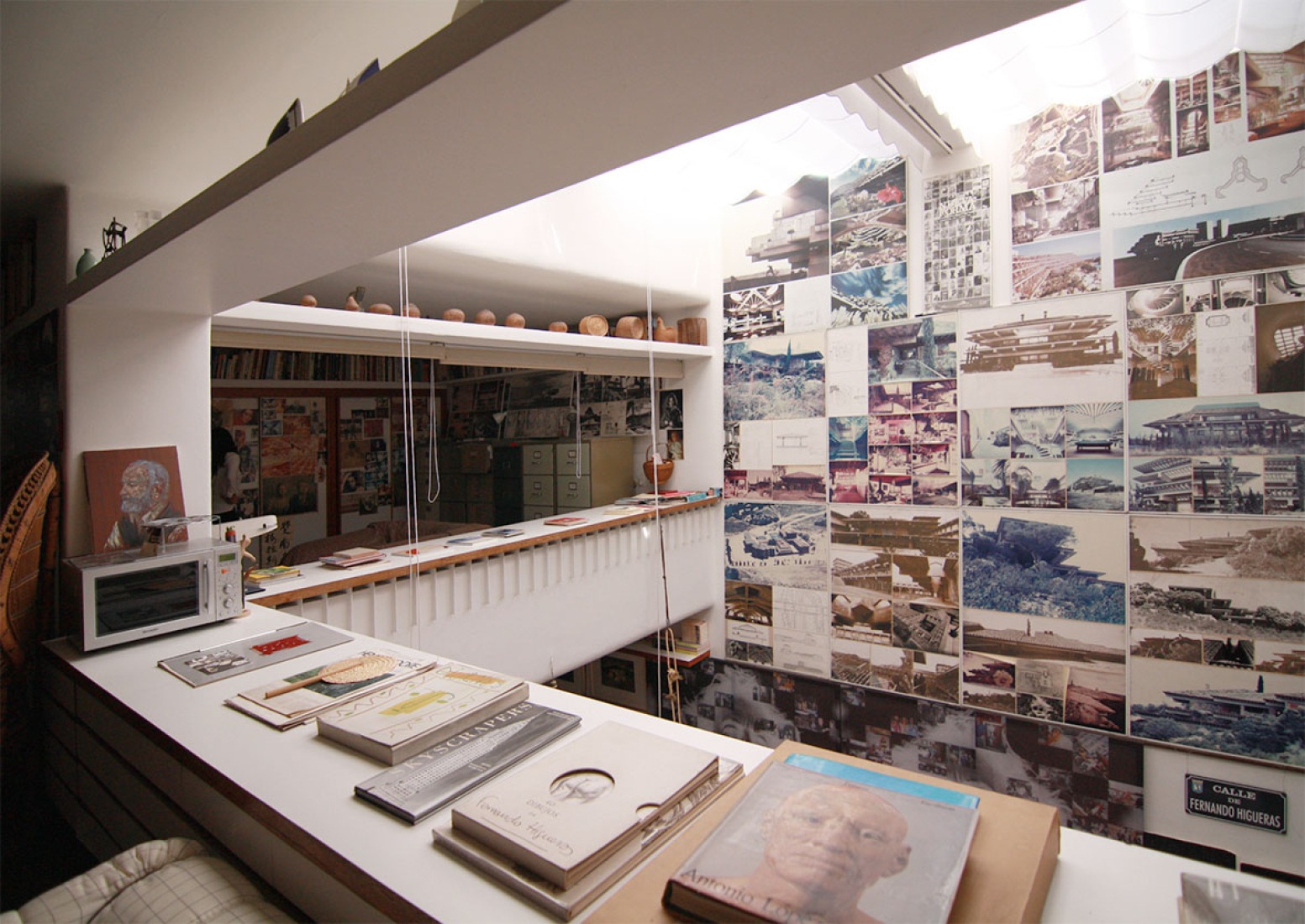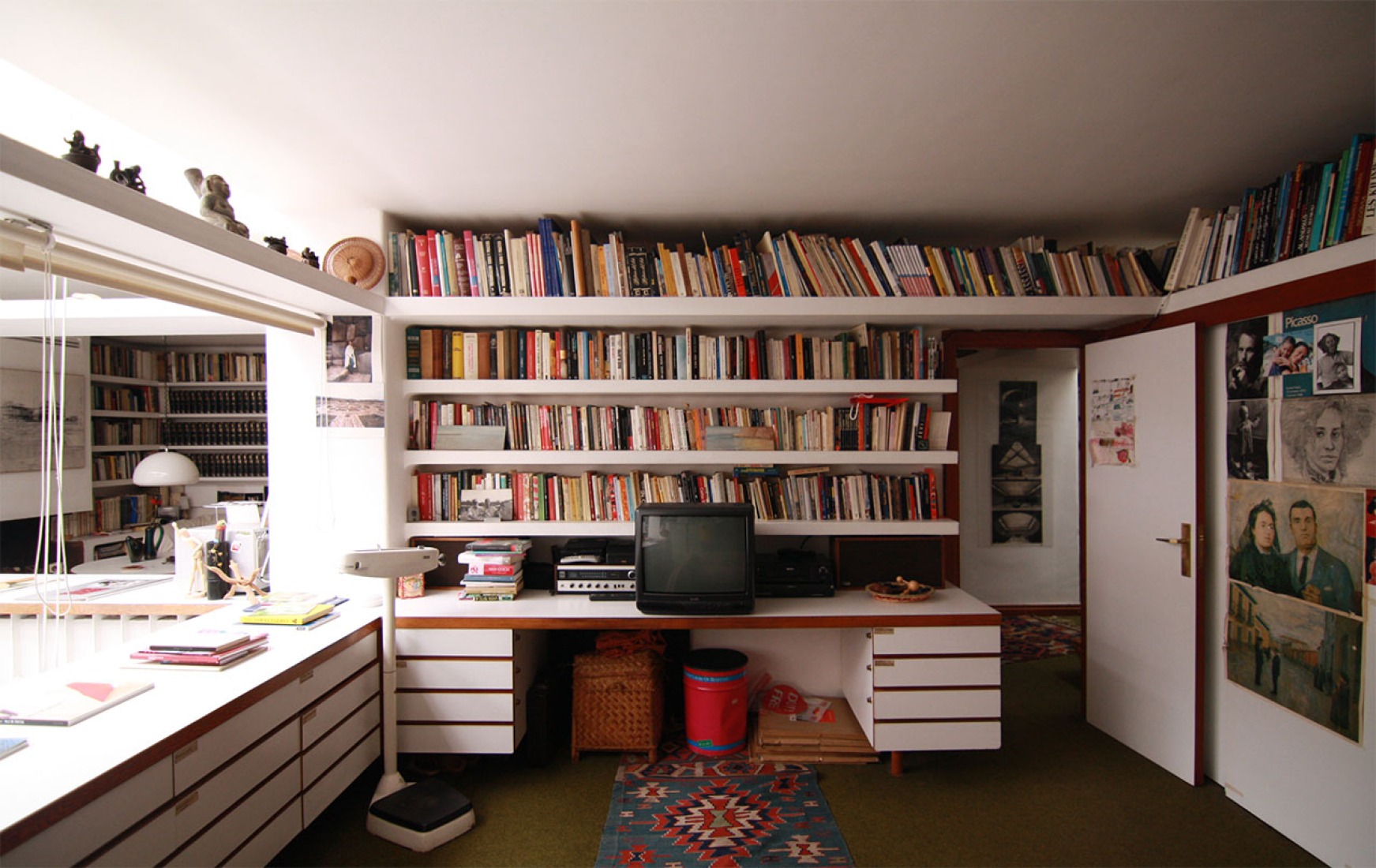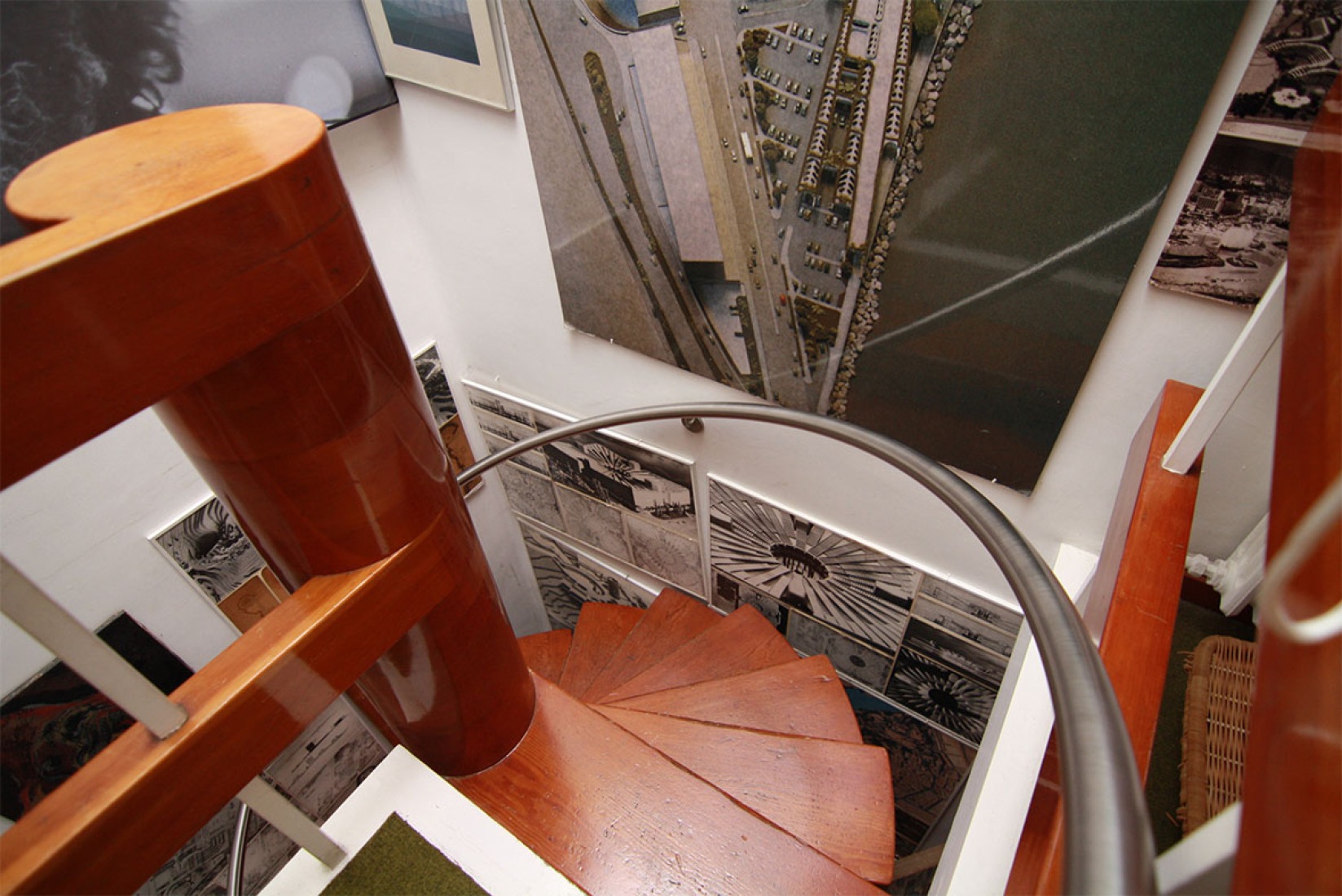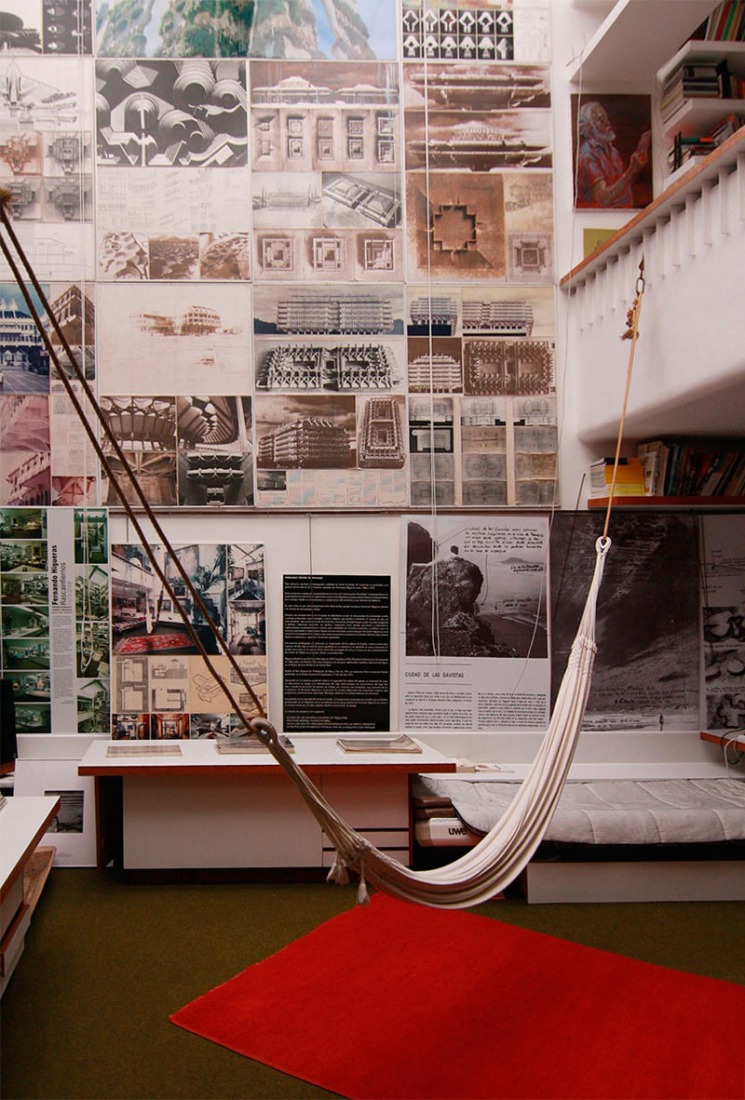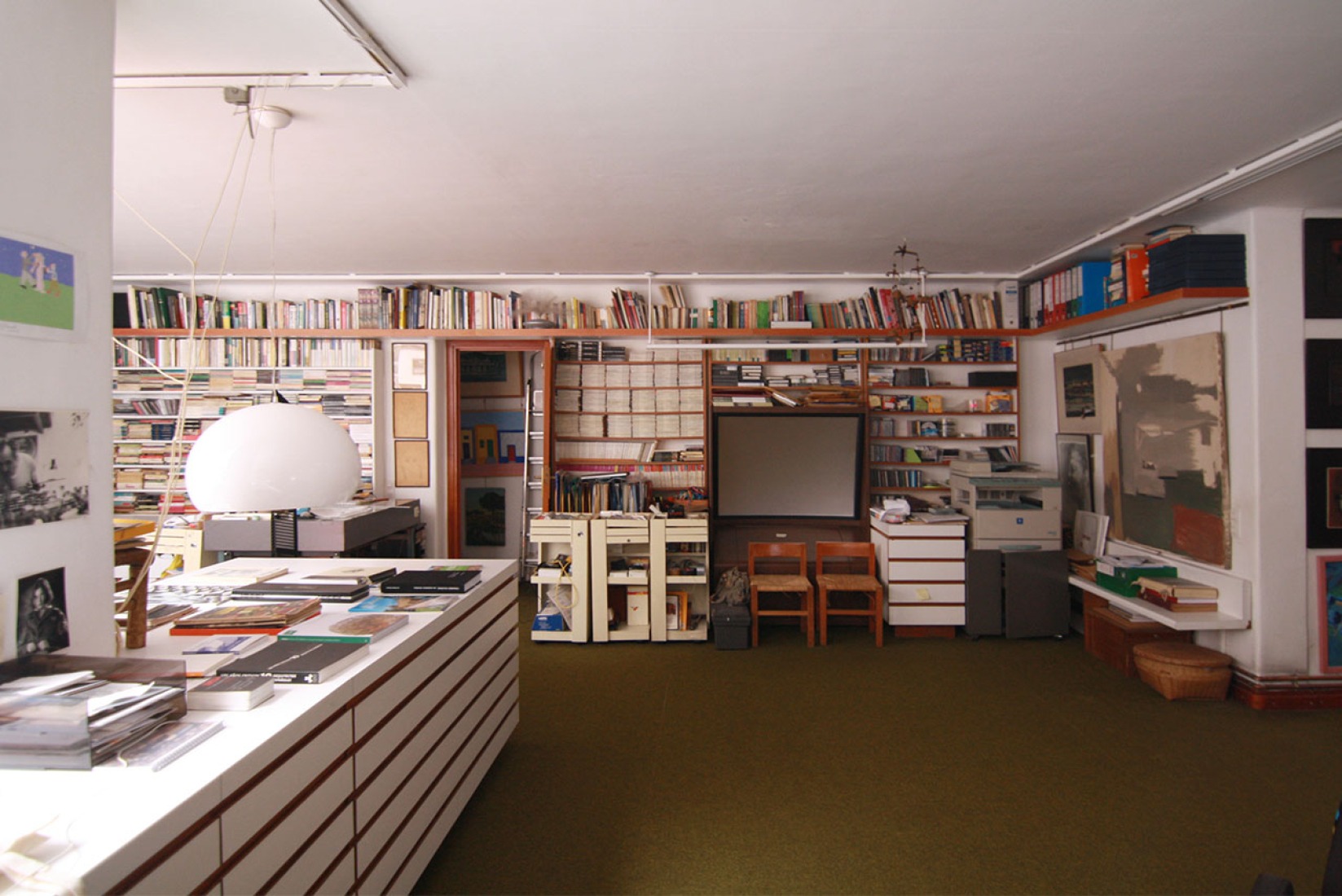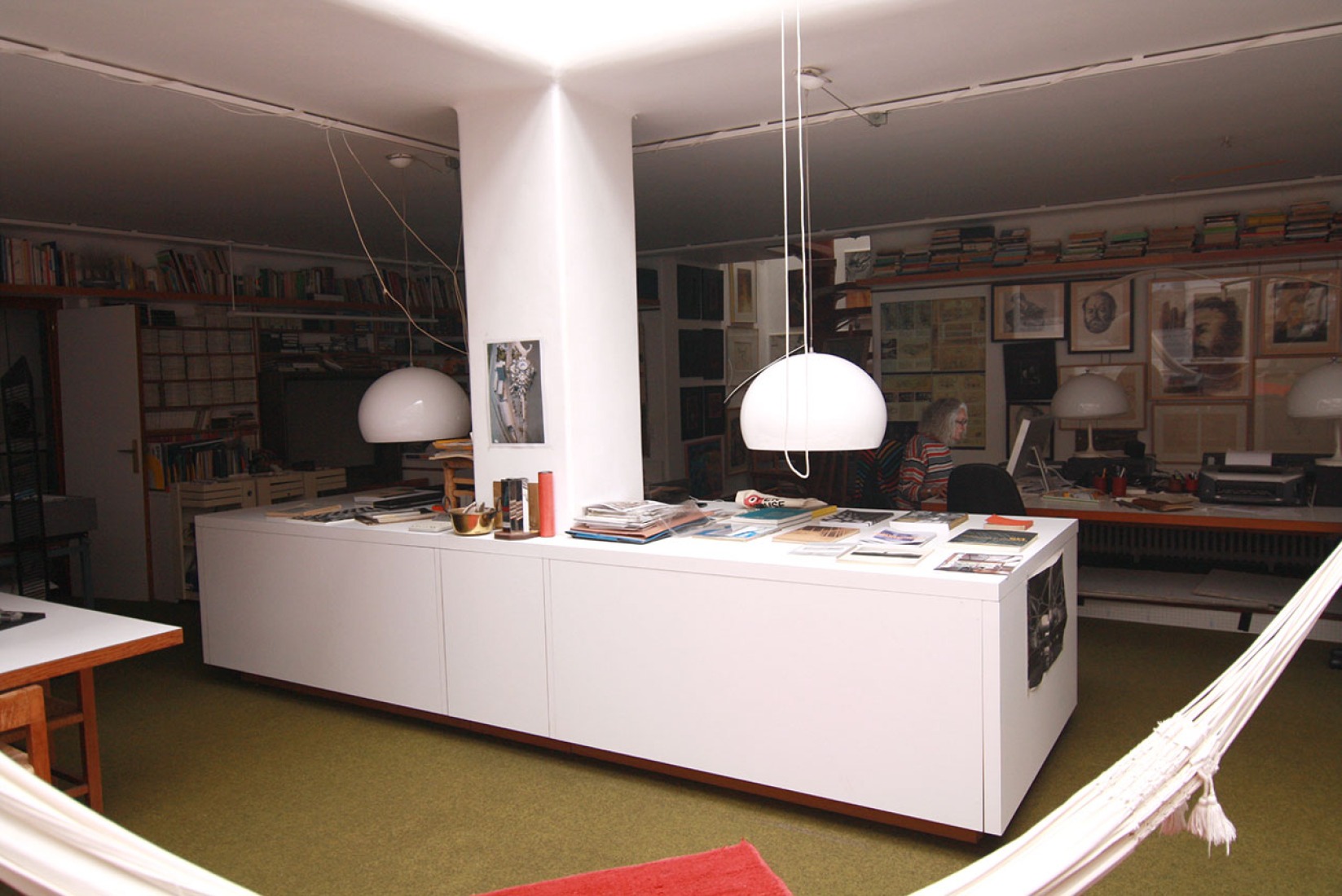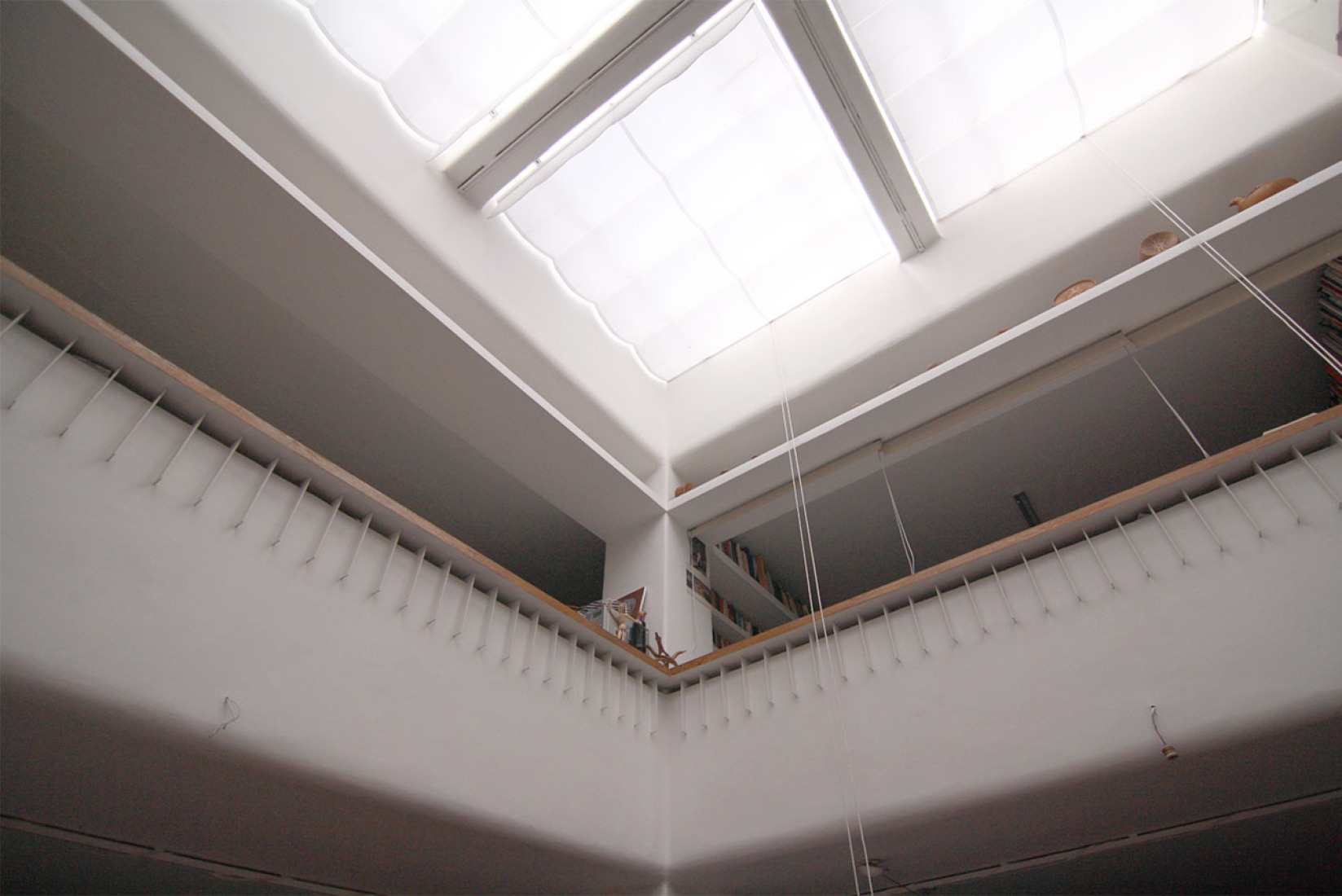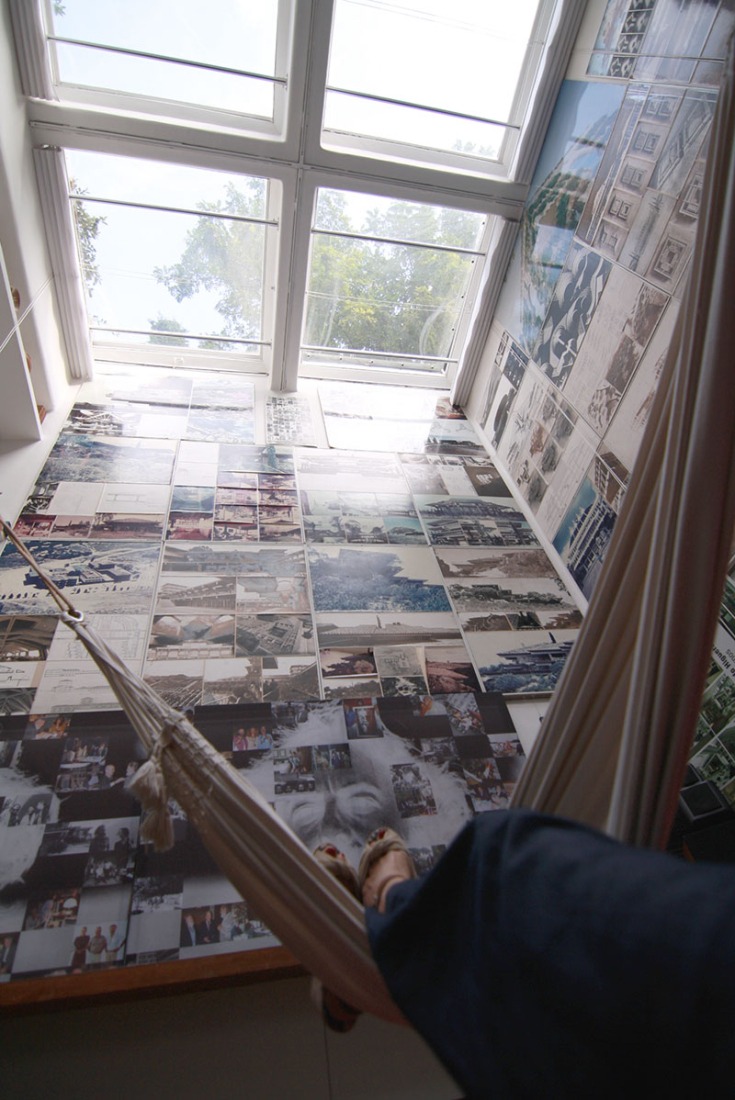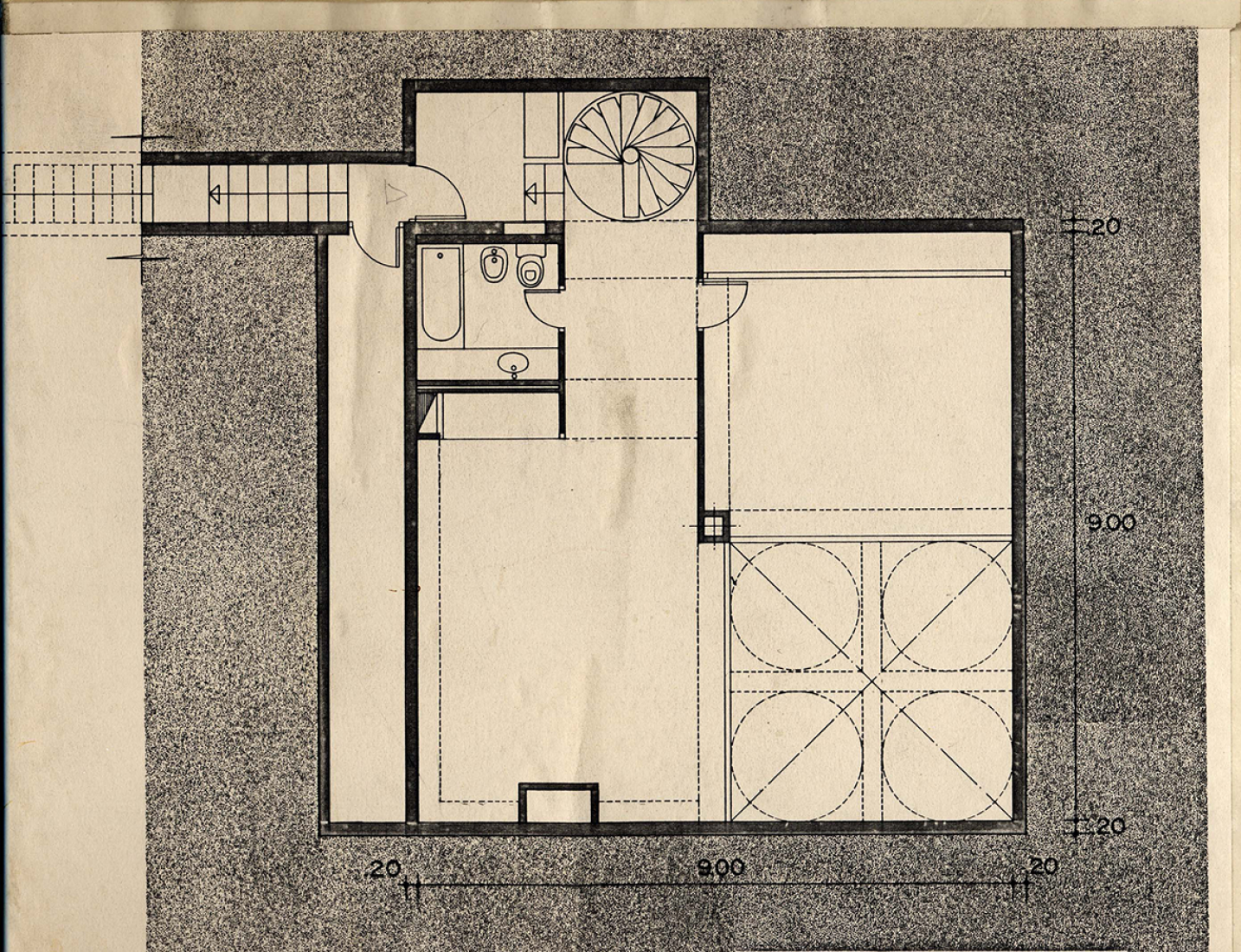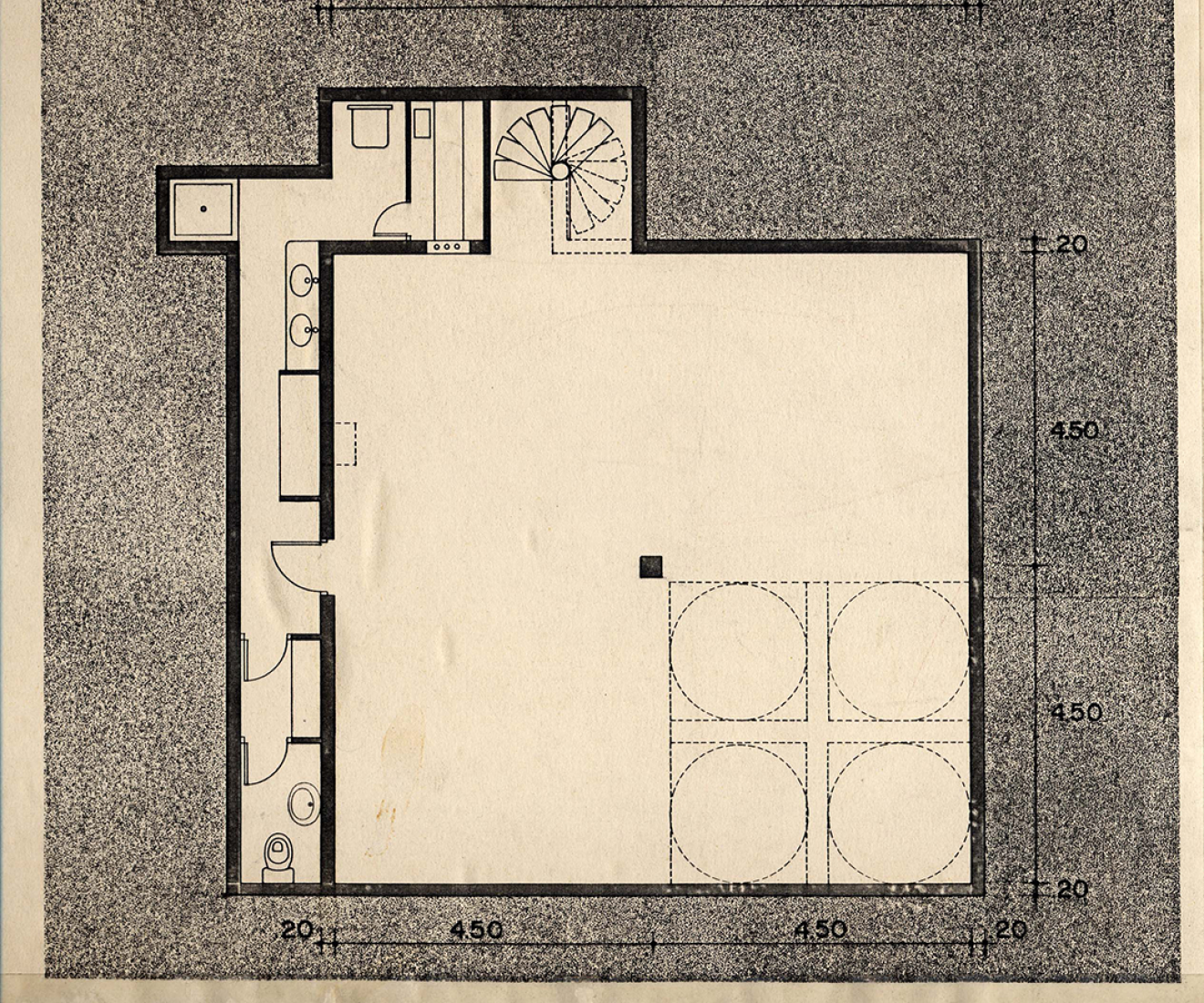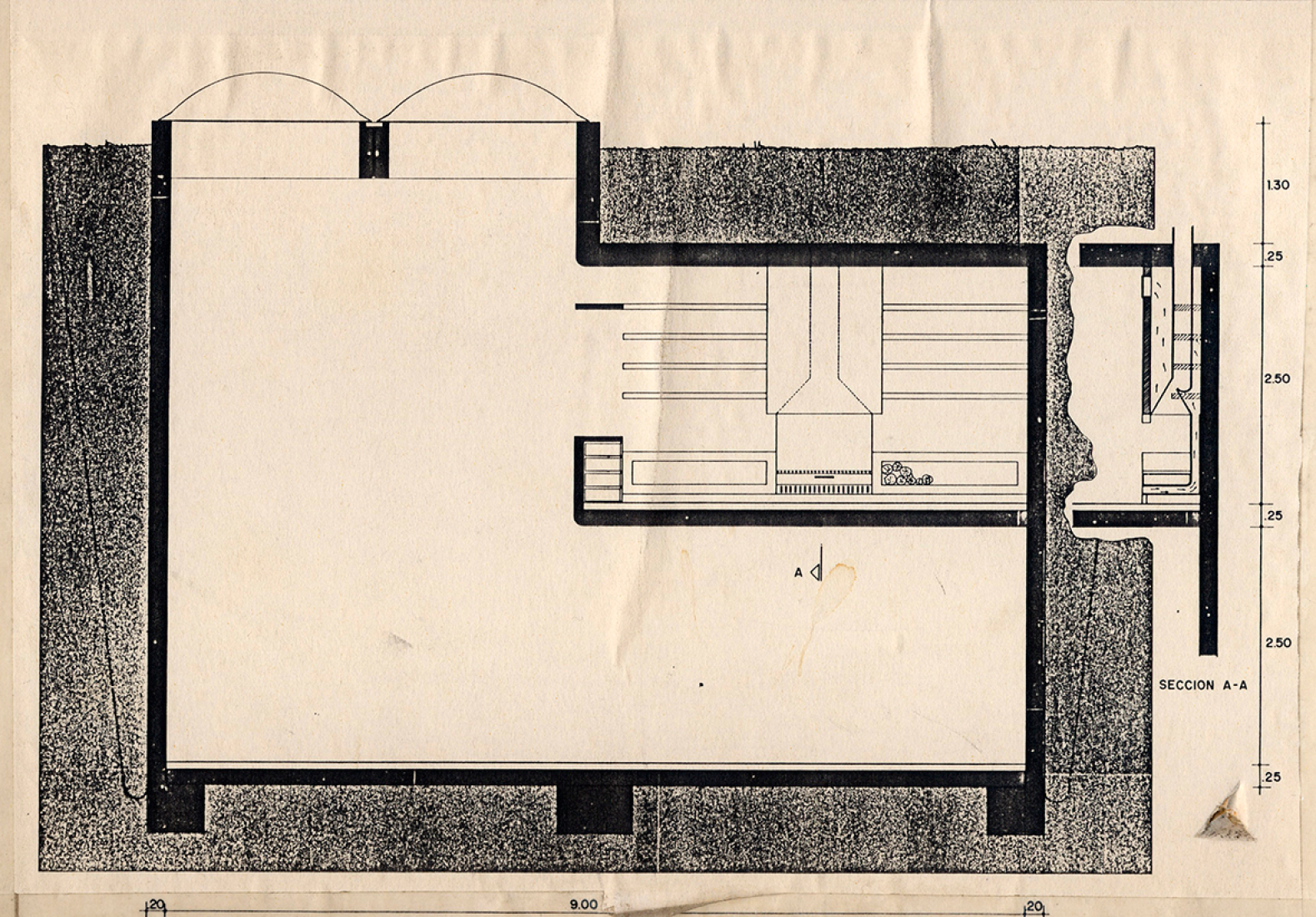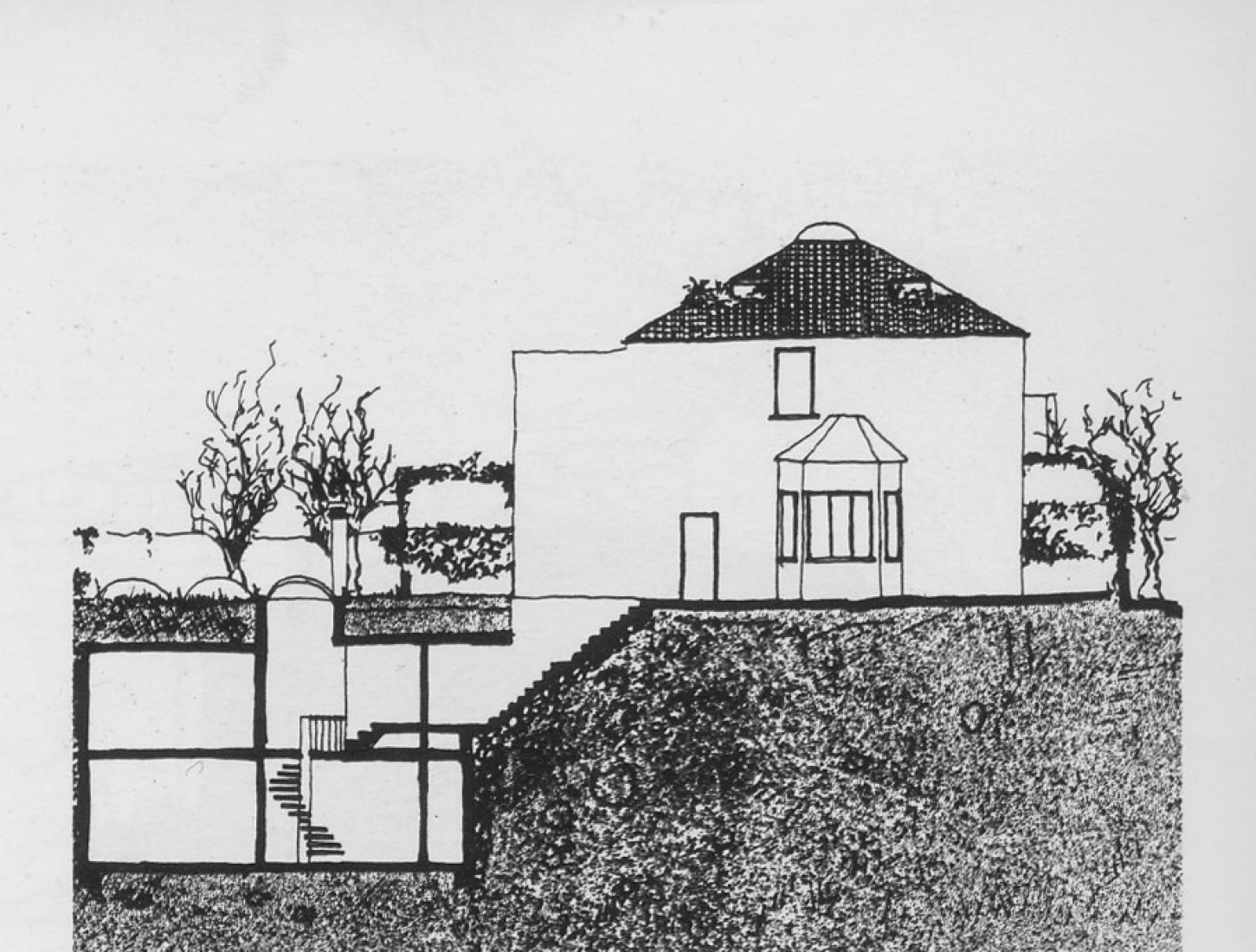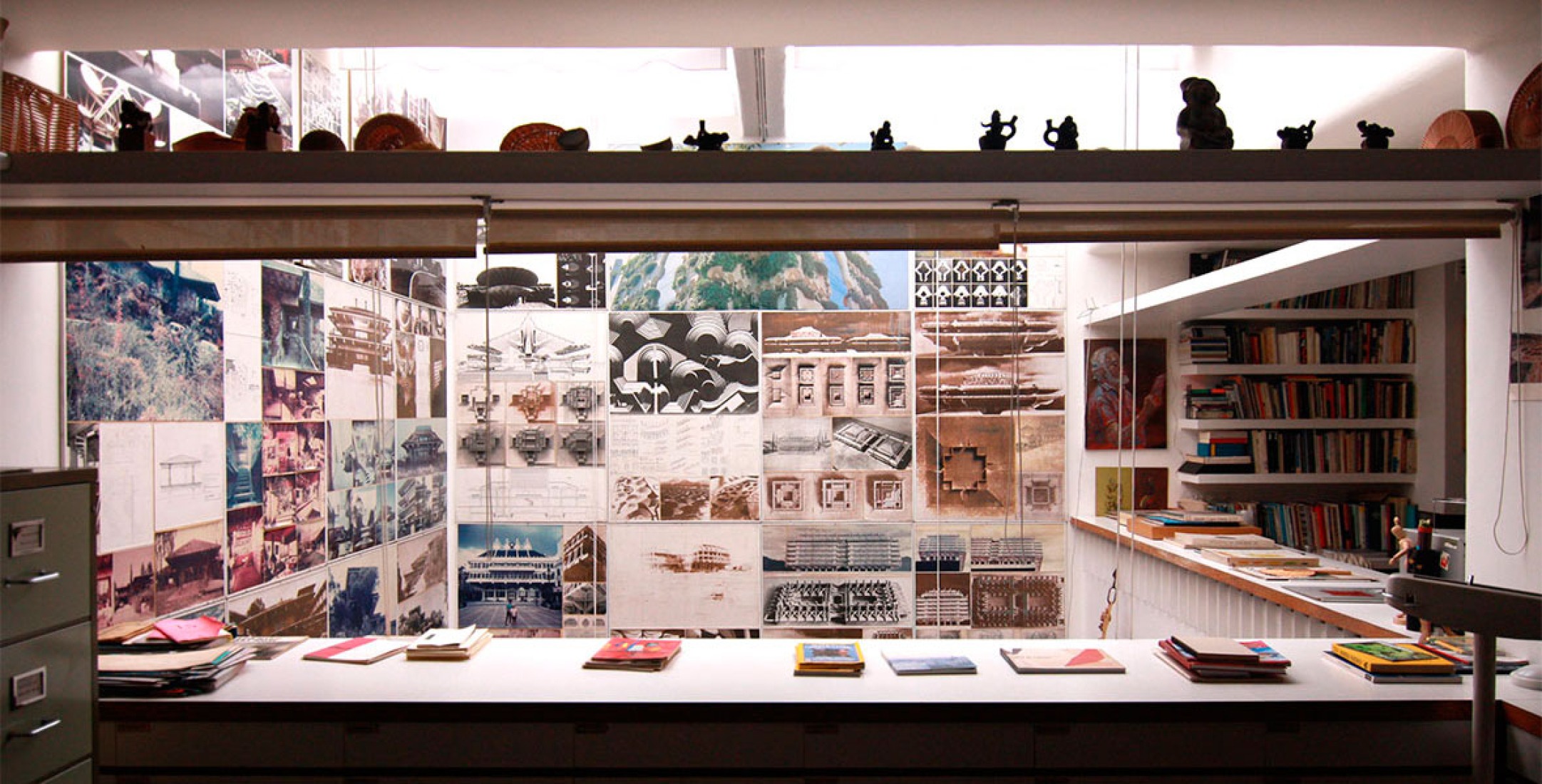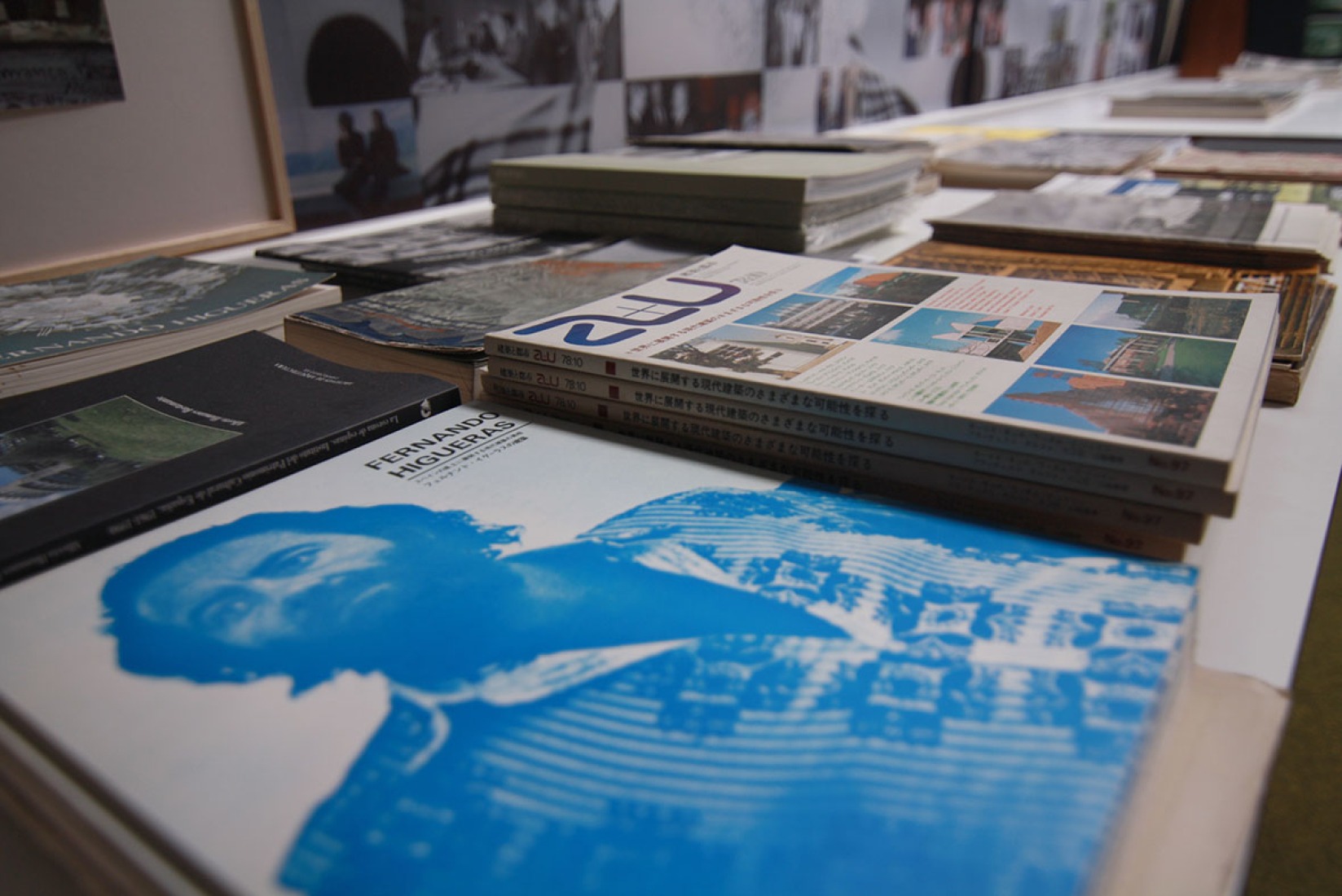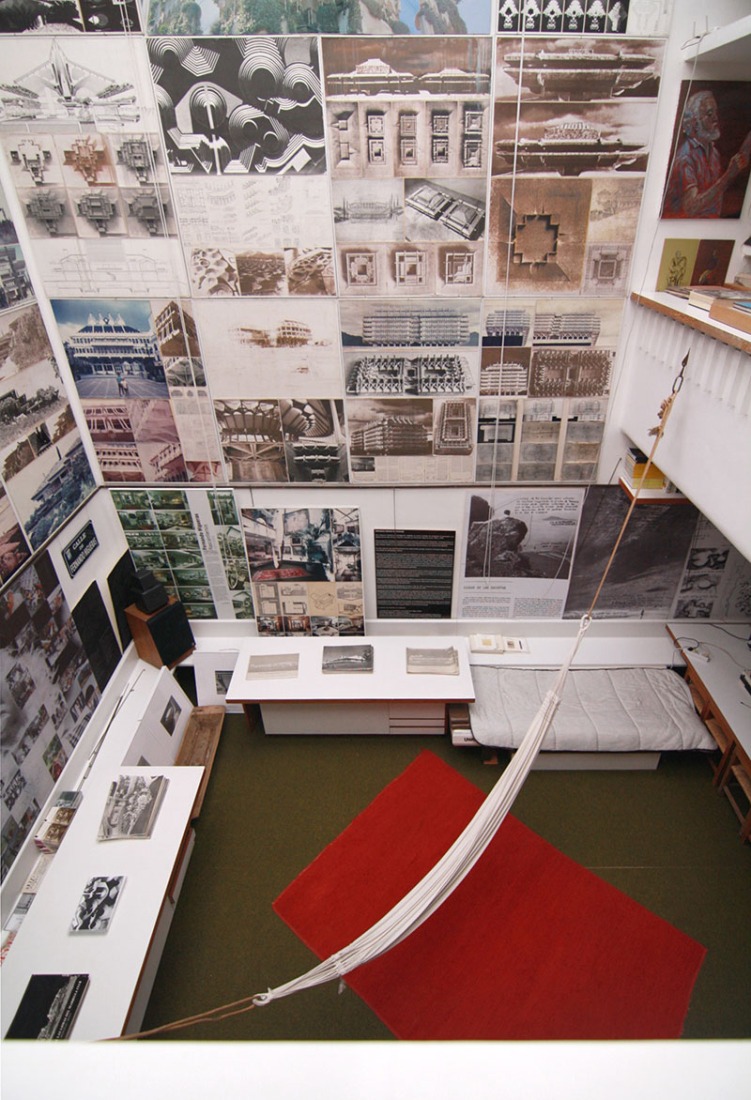Open House Madrid invites you to visit one of the most original houses of the city. Located seven meters below ground, the Fernando Higueras Foundation keeps the space where the architect lived and worked and strives to continue documenting and disseminating his work.
Let's start with a funny quote in which Higueras explains the "origin" of this project:
"This idea saved my life thirty-odd years ago, when my friend Francisco Nieva read my tarot, saw me in three years buried underground, with a cypress above me, when for 4 times in a row the death appeared in the cards. I insisted that this did not necessarily mean that I would die. Then, it occurred to me this first hellscraper (then I projected a higher one for Ground Zero in New York), I planted a cypress, 18 meters high today, and I'm still here...alive."
Higueras' obsession about the underground constructions is present in his most experimental projects, such as "The City of Seagulls" on the cliff of Famara in Lanzarote, to the point that it is believed that the architect was a key element in the decision of César Manrique to build his house in Teguise below the volcanic ground of the island. But it was not until 1972 when Higueras buys this house located in Madrid's Albéniz community and finally reveals his ideas in the underground.
Higueras performed almost simultaneously, the total remodeling of the existing dwelling in the plot and the excavation of the garden, a 9x9x7m cube plus a 2x2x7m prism to accommodate the spiral staircase that leads to the second basement. The excavation works had to be done by hand with pick and shovel, as it was impossible to introduce machinery between the existing housing and the separation wall with the adjacent house.
What was once the architect's home, since 2001 Lola Botia adapted it to be a home-studio, relocating the work area in the second basement and keeping the top floor as dwelling. Today, the space is entirely dedicated to the Foundation and has remained almost unchanged except for the decorations and the paintings covering the walls, lately replaced by panels explaining the architect's projects. However, you can still see drawings and watercolors by Higueras itself as well as a great picture of Antonio Lopez portraying the Center for Artistic restorations or "Crown of Thorns" in its construction phase.
The house stands out not only for the originality of its location in the plot, but for the quality of the interior. It is striking how a buried construction of such dimensions without gaps, except for the 5 skylights, far from being oppressive, it is a pleasant space with good lighting and thermal conditions for living. The gap under the larger skylight illuminates the rooms which, lacking of partitions, except for the bedroom and the bathrooms, remain perfectly lit during daylight hours. As in all Higueras' houses, an horizontal line runs along the perimeter of the floors to 2.10 meters above the floor, marking the tops of doors and windows, replaced here by a continuous shelf for sculptures and books that, in the top floor, it also serves to reflect the natural light into the interior.
The temperature inside the house, ranges from 16°C in winter to 26°C in summer. In the project the heating system was planned but never done, except in the bathrooms, as it was unnecessary in the rest of the house.
As in every Higueras' work, the details are carefully designed as well as the whole project. Except for the kitchen, all the furniture in the house is designed by Higueras. Great architectural plan chests and tables lower than usual- so the arm can cover the whole surface- remind us that this space was once an architectural studio. Some furniture was reused from their previous studio and others designed exclusively for the house. This applies to the shelf of the living-room, consisting of a series of L profiles covering the walls as a continuous piece or the drawers on the top floor, which have a dual purpose, storage and separation with the central hole, thus preventing using handrails that would break the visual continuity of the space.
In short, a place worth visiting to personally confirm its uniqueness and verify that the buried architecture, when correctly developed, can be much better than many conventional homes. Apparently, Higueras did not go out of the house so often, as he felt so good in it. We imagine him in his hammock under the ivy coming through the skylights, in a sort of oasis in Madrid and thinking: What's the point of going out there?
CREDITS. DATA SHEET.-
Architect.- Fernando Higueras.
Building company.- JOTSA.
Dates.- 1972-1975.
We would like to express our gratitude for the collaboration of Lola Botia and Alberto Humanes, of the Fernando Higueras Foundation, for their help on the investigation of this article.
FERNANDO HIGUERAS FOUNDATION by FERNANDO HIGUERAS.
Venue.- C / Maestro Lassalle, 36. Madrid.
Dates.- Sunday 27th from 12.00 am.
Last visit at 18.00. Registration.- Sold out.
